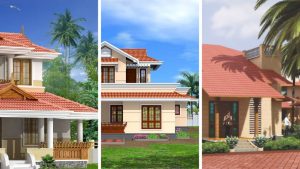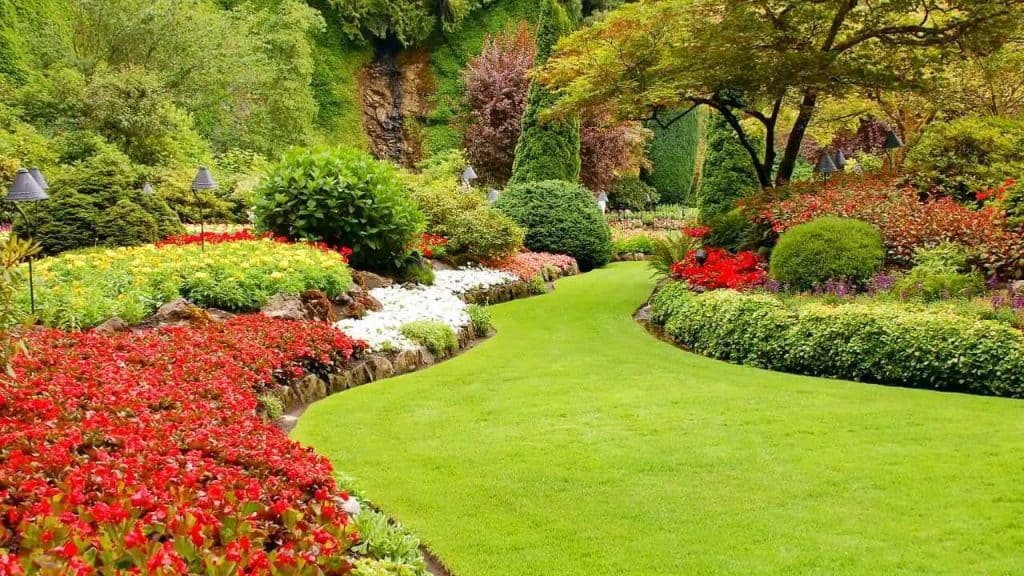
A garden is a ground made of constructed and natural elements, although even the most “natural” gardens are inherently artificial creations. The size of the garden decided the kind of usage and display it can assume. Modern living conditions have reduced this area into a smaller size than it was before.
In a medium-to-large-size type of garden, traditionally the area is divided into,
- A main ornamental area
- Seating areas and walkways
- A children’s play area
- A vegetable plot
- Eye-catching details here and there
Here is the list of different types of gardens:
- Flower gardens
- Woodland gardens
- Rock gardens
- Water gardens
- Vegetable and herb gardens
- Roof gardens
- Scented gardens
Read on for Details on Different Types of Gardens!
1. Flower Gardens
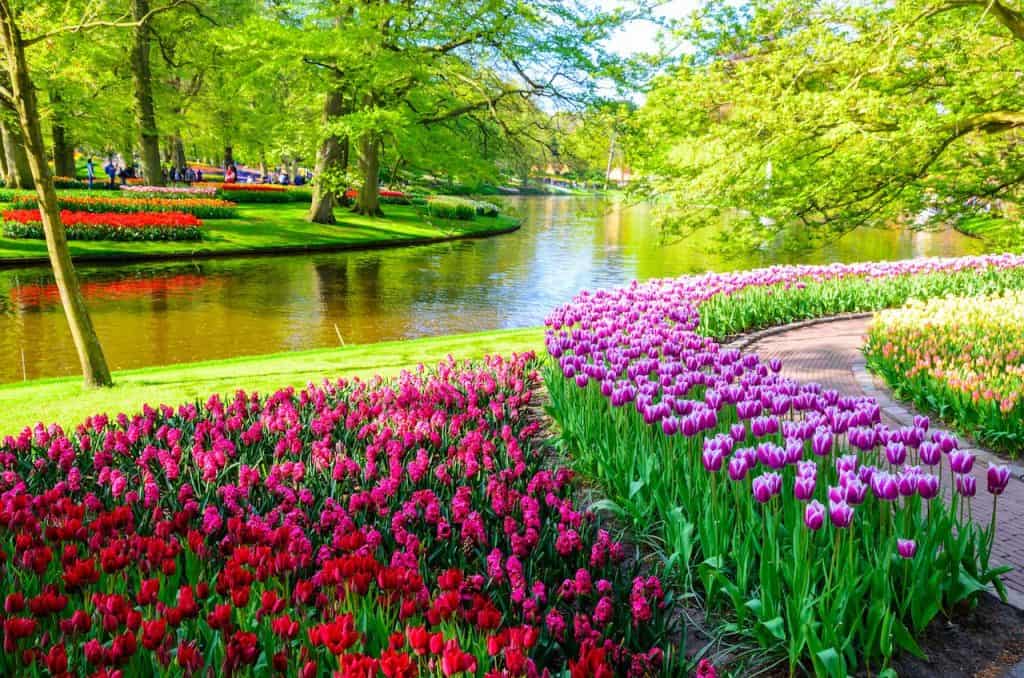
Shrubs and trees are the primary elements found in a well-designed flower garden. They are the permanent features that are planned at first and then comes the secondary additions like,
- Annuals
- Herbaceous plants
- bulbs
You have a diverse range of options for shrubs and flowering trees but when considering planting them in your garden remember to cinder the amount of space they’ll need once they are mature. So a forest tree of about 100 feet in height will be an inconvenience in a 30 square feet garden but how about redbud trees or a flowering cherry? They’ll be the cutest addition to your green family.
- In older types of gardens, you’ll find a herbaceous border that gives an ample display of colors during summers.
- Nowadays, planters have easy-flowering bulbs planted in groups towards the front of the garden to have blooms in the early spring.
- Another popular practice of gardening is borders of mixed flowering shrubs along with some herbaceous plants.
- At the end of spring, you can plant a group of half-hardy annuals that can withstand low temperatures at night. This will fill up the gaps left by the flowering bulls during spring.
- Such a border can be filled with flowering roses and large shrub roses at the back. Polyantha roses, floribunda, and hybrid tea roses can be grown in a separate rose garden or rose beds.
2. Woodland Gardens
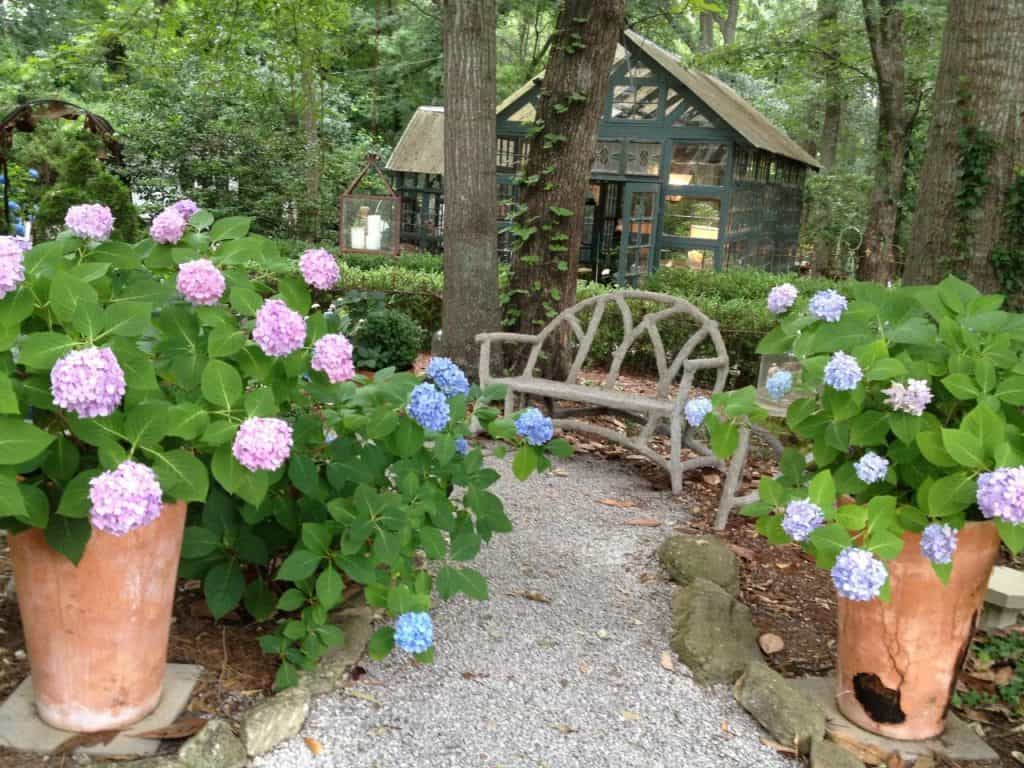
Woodland gardens are the natural descendants of shrubby wilderness. Woodland gardens mean naturalness and informality. Here are some features of woodland gardens:
- Woodland gardens have paths that curve around rather than run straight. It will be either grass or mulch and not pavement.
- It will have thin trees to accommodate light, especially in the glades. Plants in a woodland garden are supposed to be woodlanders in their original habitat, such as,
- Snowdrops
- Daffodil
- Lily
- Maple
- Pieris
- Magnolia
- Rhododendron
- Epimedium
- John’s wort
- Hellebore
- Primrose
3. Rock Gardens
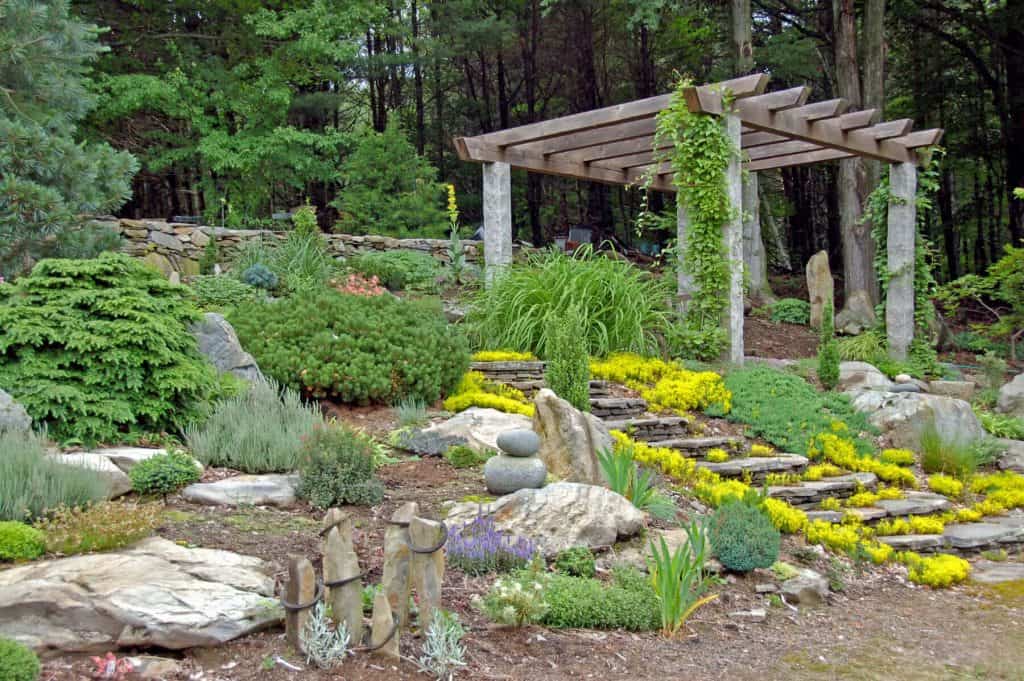
Rock gardens are types of gardens that are designed to look as if they are a natural part of a slope of a rocky hillside. If you are adding rocks, place them on the broader side as that’s how it is found in their natural strata. A small number of large boulders are usually better than a large number of small rocks.
- Rocks must be arranged by considering the exposure that sun-tolerant plants must get such as for rockroses.
- For shade-tolerant plants like primulas, rocks need to be placed in a north-facing, cool position.
- For filling up the gaps among the rock faces, small perennial plants can be added.
The types of rocks found in a rock garden are usually limestone and sandstone. For a more natural and restful feel, you can add sandstone which is generally pitted and less irregular. However, plants like dianthuses thrive well on limestone.
4. Water Gardens
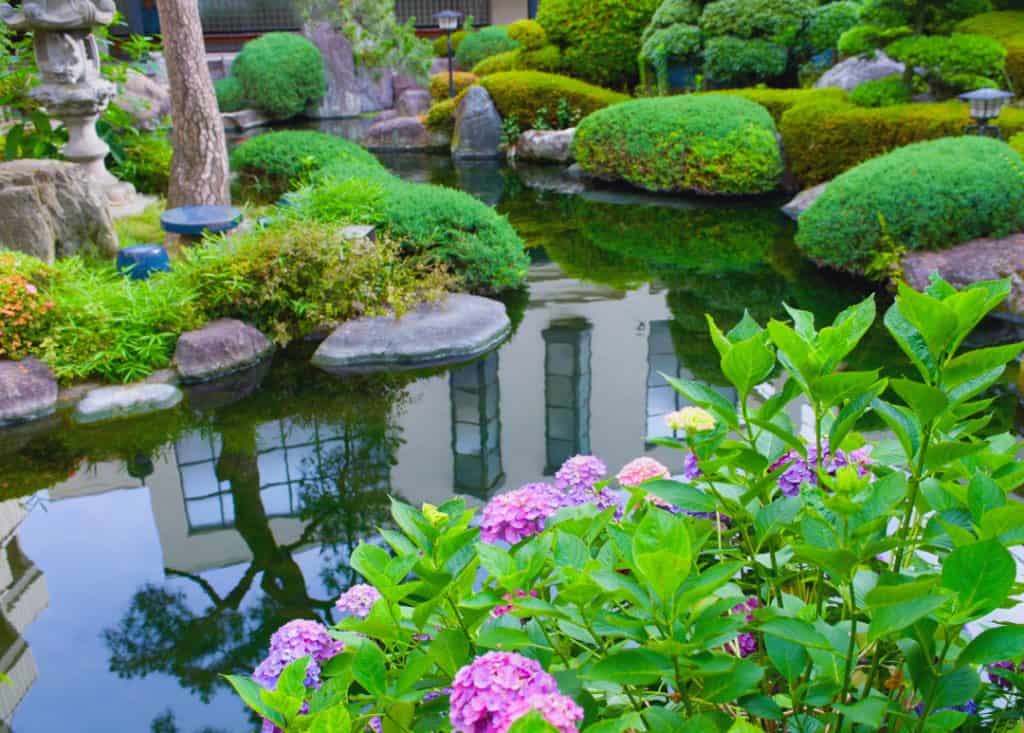
Water gardening is the oldest type of garden dating as far as 2000 BCE. Most water gardens have an ornamental stone lantern at their center or a flat trellis roof of wisteria growing over the water.
- In North America and Europe, water gardens can be found with circular or rectangular outlines. They also sometimes contain fountains often without plants but one or two water lilies.
- There also exists an informal pool with an irregular outline with water lilies and other water plants lining them. These often have damp or boggy soil where plants tolerant to moisture can be grown.
- A pool must contain oxygenating plants to keep the water clean and to support water life if any. Most water plants do well in 2 to 4 deep still water. If you have temperate water lilies, know that they flower all day and the subtropical and tropical ones bloom only in the evenings.
- In temperate countries, water gardens are made under glass o that the pools can be heated. Such water gardens have tropical plans like the lotus or the great Victoria amazonica. These can be grown together with some papyrus reeds. Here are some plants for damp places.
- Osmunda ferns
- Irises
- Calthas
- Candelabra primulas
5. Vegetable And Herb Gardens
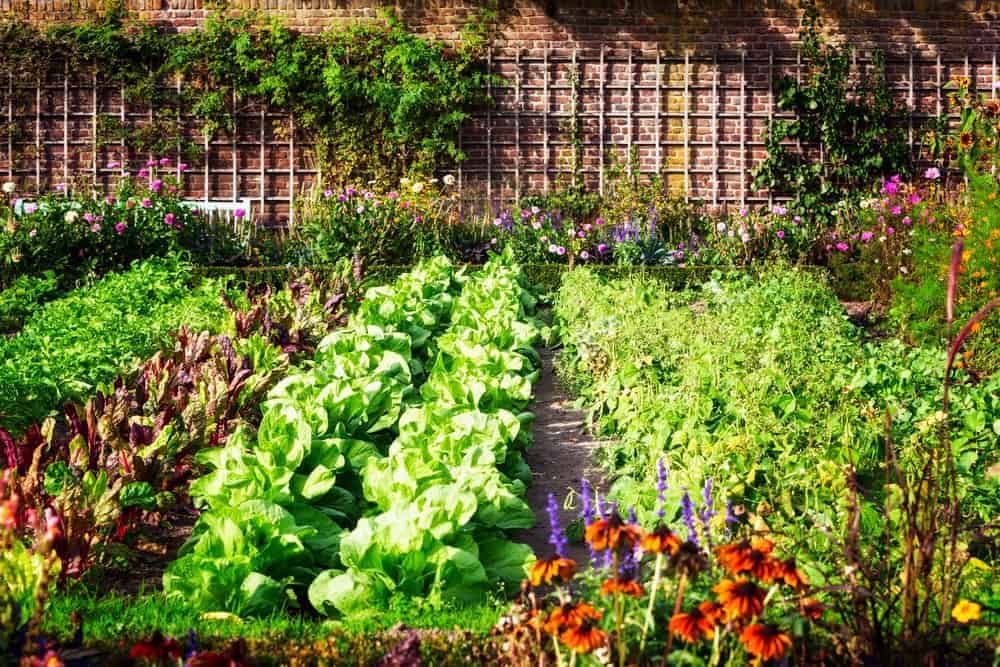
- The medieval and botanical gardens were actually herbs and vegetable gardens. They contained medicinal herbs such as,
- Dill
- Marjoram
- Fennel
- Rosemary
- Parsley
- Thyme
- Modern herb gardens now contain herbs used for cooking and not medicinal plants. These herb gardens need plenty of sunlight as the majority of them belong to dry and warm regions.
- Vegetable gardens also need a sunny and open space to thrive. You need good cultivation with the ground properly prepared and must also practice rotation of crops. The usual period of rotation for vegetable crops is 3 years. Moreover, rotation prevents any carryover of diseases and pests from one season to the next.
- The art of vegetable growing is the cultivation of short rows of hedges called the “potager” in French. The finest example of a European decorative vegetable garden is the parterre vegetable garden at the Chateau de Villandry.
Special Types Of Gardens
6. Roof Gardens
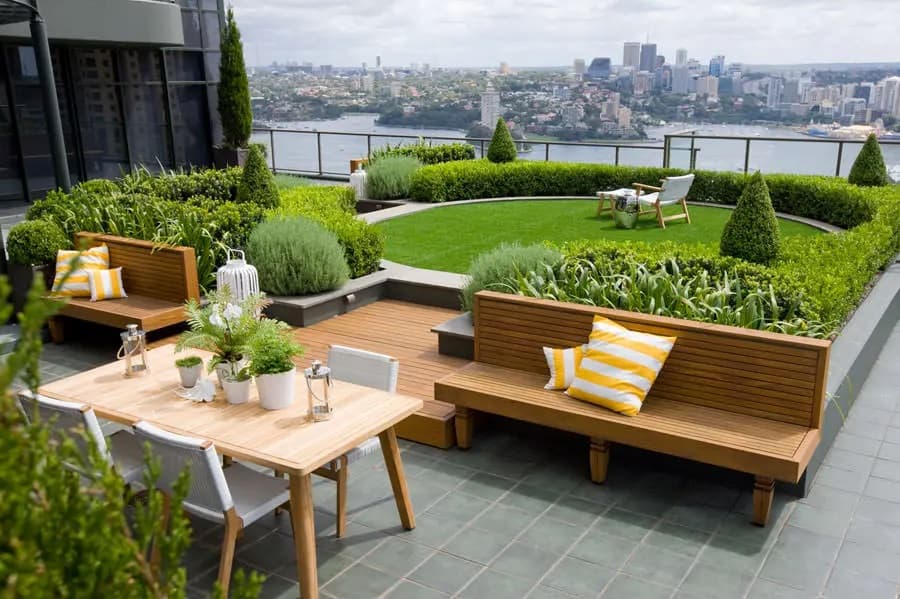
Modern architecture constructs flat roof and different types of gardens have made their way there. You could find these rooftop gardens in commercial buildings and private houses. They follow the same principle as the other types of gardens but with less soil depth as that helps to maintain the low weight on the rooftop. The size of the plants thus is limited and they are usually set in tubs or other such containers. You’ll find that elaborate rooftop gardens have small beds and pools too.
7. Scented Gardens
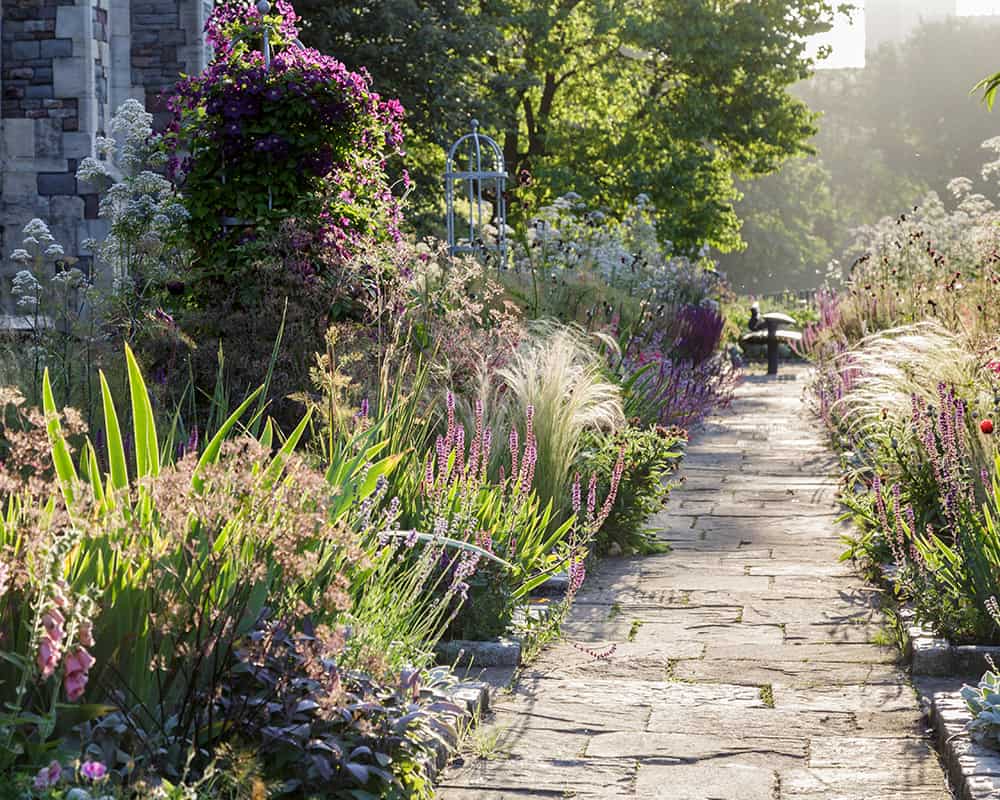
The scent is one of the elements that people appreciated in all types of gardens. In scented gardens, the scent from flowers or leaves of plants is the main criterion. Only such plants are included in scented gardens which especially benefit blind people. Some of these scented plants release scents only under full sunlight while others have to be rubbed or bruised to induce their fragrance. Such scented plants are grown on raised beds.
What Can You Find in All Types of Gardens?
Let us check out what other elements you can find in the garden apart from plants.
- Permanent elements
- Ground and Lawn Covers
- Shrubs and Vines
- Trees
- Transitory Elements
- Herbaceous Plants
- Bulbous Plants
The Bottom Line: What are the Different Types of Gardens?
The word “garden” in British English indicates a small space beside a building. In American English, this would be called a yard. For all the different types of gardens enthusiasts both newbies and mature ones, we have a curated list of the different types of gardens. These are classified according to their location, types of plants that grow in them such as trees and herbs, and their main attractive feature.
Types of Gardens FAQs:
1. What is a flower garden called?
A flower garden is a type of garden space where flowering plants are cultivated and such spaces are called cutting gardens. These are usually found at the front of the building in the front yard for everyone to admire.
2. What are vertical gardens?
Vertical gardens are the type of gardens that are vertically suspended on panels. Plants are grown on them using hydroponics. They can either be free-standing or be attached to a wall. These gardens have other names too such as moss walls, plants walls, living green walls, and so on.
3. What is a hydroponic garden?
Hydroponics is the method to skip soil and sub in a different material to support the roots of a plant. These plants grow directly in nutrient-rich water.




